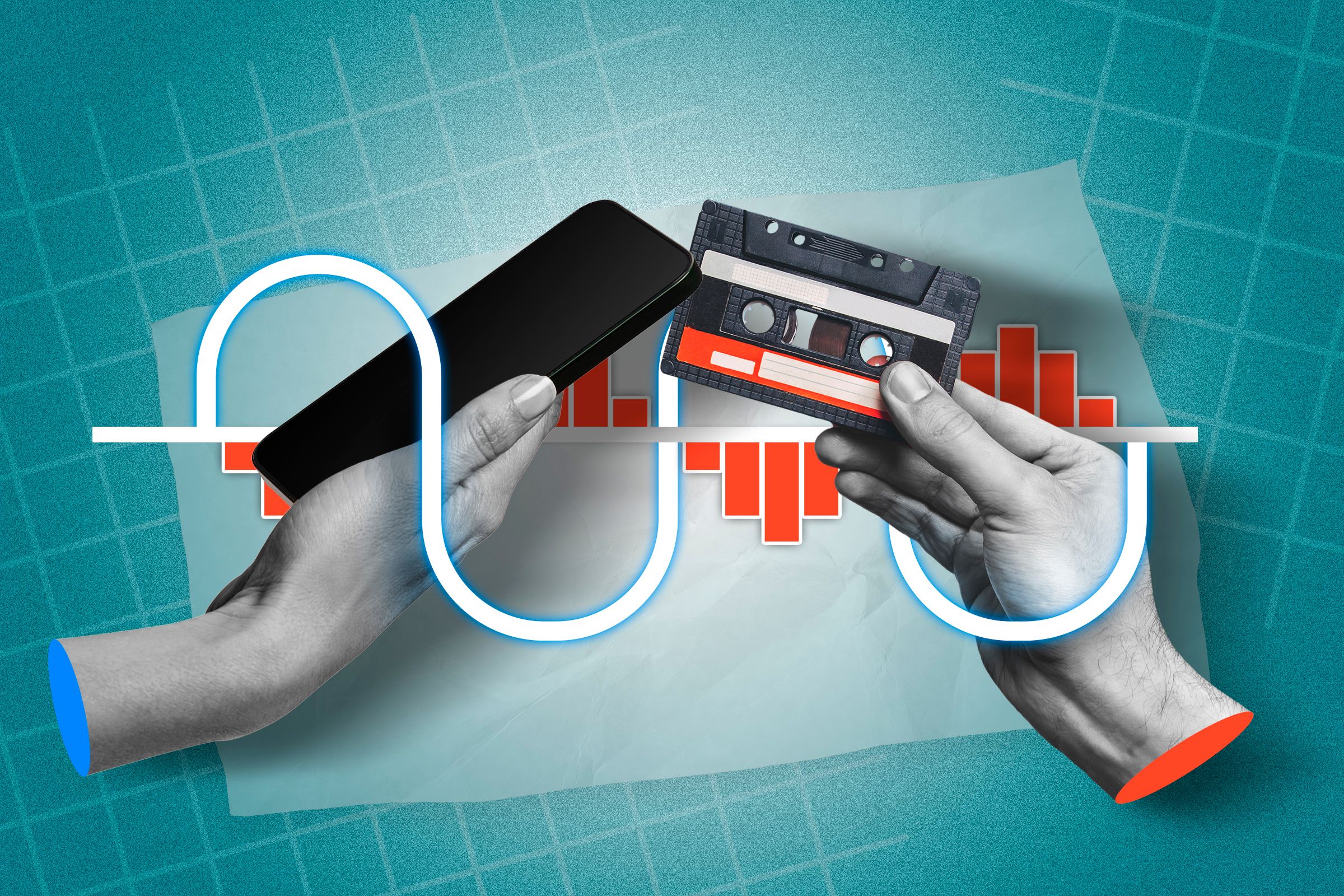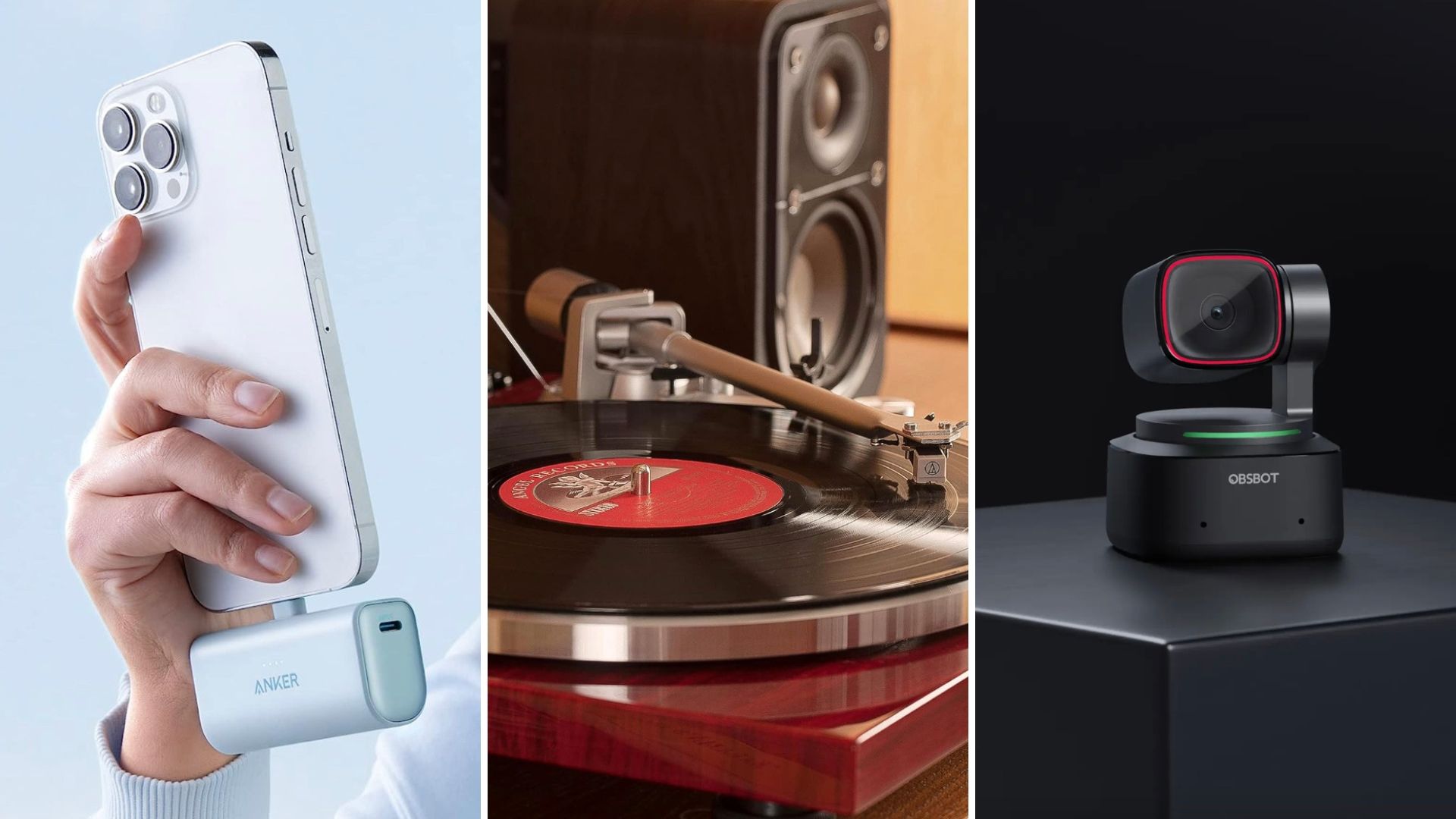If you were around in the late 90s and early 2000s, you remember how technology seemed to be getting smaller and smaller. Eventually, we expected cassette and CD players to be as small as the media themselves–but that didn’t happen.
How Hardware Changed With The Times
Picture this: it’s 2002, and you just opened the latest Eminem album. You take out your shiny new portable CD player that’s only a little bit larger than the CD itself and pop it in to listen to the entire album on repeat. Nearby is a portable cassette player that is around the same size as the cassettes it plays.
Technology tends to get smaller as time goes along. Just take a look at today’s portable devices. The Steam Deck shows that handhelds may be the future of PC gaming, and that’s just a regular gaming PC, shrunk down to work in the palm of your hand.
Today, you can still find portable cassette and CD players because there’s (still) an ever-shrinking market for them. Still, the nostalgia of holding onto that Bob Marley cassette your dad gave you in 1998 keeps you needing a portable player for it. Yet, the technology for these players seems to have come to a standstill.
Manufacturers Are Dwindling as Demand Drops
In the early 00s, you’d be spoilt for choice when it came to choosing a portable cassette or CD player. Every brand, from Panasonic to Coby, had an offering at different price ranges. Now, if you search for a portable player on Amazon, you’ll come up with a much smaller assortment of new manufacturers.
You’ll have a lot of brands to choose from, but none of them will be ones you recognize. As the demand for these electronic devices started to dwindle, the mainstream manufacturers moved into more current technology. As a result, smaller, less recognizable brands took over manufacturing and selling these portable players.
If you look at the portable players on offer, you’ll realize something: all of them seem to be stuck in the 00s. With technology progressing as fast as it has, shouldn’t there be sleeker, more streamlined designs? Why did players get stuck in that retro period without any update to their design?
Smaller Technology Comes With a Price
Moore’s Law is well known in computing circles, and it says that the amount of transistors on a chip roughly doubles every two years with a minimal increase in price. What this means is that tech usually gets smaller with time. If you look at how far cell-phones have come in processing power, you’ll have a good idea of how it works. But if that’s the case, why doesn’t it work for portable cassette and CD players?
While I was looking for the reasoning behind this, I found a simple reason behind why the cassette and CD-players were still so bulky. It has to do with the underlying technology. In a portable CD player, the most important component is the laser head. Unfortunately, the choice of components that manufacturers have is limited. The bulky designs we see in these modern CD players are due to having to accommodate those laser heads.
For cassette players, the problem is similar. While several companies are making portable cassette players in 2024, all of them rely on the same reading mechanism for the tape head. Since this mechanism only comes in one size, all the cassette players manufactured with it have to fit the same form factor.
While technology manufacturers of the 90s and 00s could improve and iterate on their existing technology, there just isn’t the market nor the profitability to do so with current components. If 8-tracks, an even older technology, had survived the ages, it too would run into the same problem of limited technology.
Other Retro Technology Faces Similar Problems
A few years ago, people started listening to vinyl records again, and the medium has a lot of new technology because of this upswing in users. When vinyl players became popular again, its biggest issue was the diamond needle that was needed to “read” the records. Even today, there hasn’t been any effort to make a needle that stands up to use despite all the current technology we have available.
CDs seem to be going in the same direction as 8-track tapes, with more and more people having them as conversation pieces and not actual music technology. However, in a surprising trend, cassette tapes are making a comeback, meaning there may be a use for those portable cassette players after all.
That isn’t to say that modern portable cassette players aren’t pushing the envelope. Many of them have technology you’d expect them to have. From more efficient battery usage to Bluetooth connectivity in some cases, portable cassette players are proving that they aren’t ready to give up the ghost just yet.
Despite that, having retro portable technology is more of a flex than a necessity. With music so easily available through streaming and even downloaded music on our phones, retro portable music devices are just throwbacks to a simpler time. There’s still no substitute for that analog hiss you get listening to the tape past the read head.
The Tradeoff Between Old and New
I am not likely to be someone buying a new retro portable cassette or CD player. The one I already have still works (although it’s way too draining on the batteries). I know how good it is to feel that sense of nostalgia. There’s something that listening to digital music can’t possibly copy, and that feeling comes from listening to music on the original hardware.
While a portable cassette or CD player isn’t technically the original hardware, it’s close enough. With a good set of earbuds or headphones, you can experience the music as it was meant to be experienced. Listening to music the retro way walks the line between old and new, giving you the best parts of both. It’s just a shame the hardware won’t get any better.






